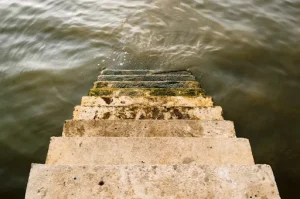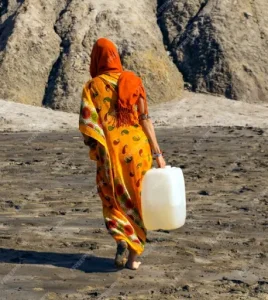Every Drop Counts – Complete Guide for CBSE Class 5 EVS Chapter 6
Welcome to iPrep, your Learning Super App.
Our learning resources for class 5 EVS Every Drop Counts are designed to ensure that you grasp this concept clearly and perfectly. Whether you’re studying for an upcoming exam or strengthening your concepts, our engaging animated videos, practice questions, and notes offer the best of integrated learning with interesting explanations and examples. Let’s start the chapter Every Drop Counts with a journey back in time to a time when wells and lakes were very important for our survival.
Journey Back in Time: Water, Wells, and Lakes!
Long ago, people knew that every drop of water counts. They built special lakes, stepwells, and other water structures that helped them save water for the entire year. In this chapter, we’ll learn about these ancient water-saving methods, understand why every drop counts, and think about how we can use water wisely today!
Let’s start by learning about the Ghadsisar Lake that helped the people of Jaisalmer get water throughout the year. Ghadsisar Lake is a great example of how every drop counts.
The Story of Ghadsisar Lake
Many years ago, King Ghadsi of Jaisalmer built a huge lake with the help of the people. This lake, called Ghadsisar, became the centre of life. People came here to celebrate, dance, sing, and even learn. When it rained, the water would fill the lake and overflow into a series of connected lakes, storing water for the entire year. But today, Ghadsisar is no longer in use as buildings have replaced the lakes.

Ghadsisar Lake in Jaisalmer, an ancient structure for water storage.
Think and Reflect:
- Why do you think King Ghadsi and the people built this lake?
- How would life be different if water was available all year round without any effort?
Having learned about Ghadsisar Lake, let’s look at how ancient travellers to our beautiful country were amazed by how our ancestors made every drop count!
Traveler from the Past: Through the Eyes of Al-Biruni
Over a thousand years ago, a traveller named Al-Biruni visited India from a place now known as Uzbekistan. He was amazed by the ponds and lakes built here. Al-Biruni wrote about the huge rocks and iron rods used to build chabutaras (raised platforms) around lakes, making them strong and durable. His writings help us learn about the past and understand how skilled people were at building water structures since they realized that every drop counts and water is precious.
Discussion Questions:
- Why do you think Al-Biruni was so surprised by the water structures in India?
- What would you observe if you visited a new country?
Let’s look at how the people of Rajasthan have for long known that every drop counts and have stored rainwater to overcome water shortage.
Making Every Drop Count in Rajasthan
Rajasthan receives very little rainfall, sometimes only for a few days a year! Yet, people in Rajasthan managed to live without facing water shortages by building lakes, johads (small earthen check dams), and bavdis (step-wells) to store rainwater. People understood that water is precious, so everyone worked together to save it and make every drop count.

A stepwell that allows people to walk down to reach water.
Activity: Design Your Own Rainwater System
- Draw a picture of your house.
- Imagine it’s raining. Draw a path showing how rainwater could flow from your roof into an underground tank.
Think About It: Making Every Drop Count
- How would life change if it rained only for a few days each year?
- Do you think we should have more water-saving methods like the people in Rajasthan?
Let’s now move further in the chapter Every Drop Counts to see how water bodies have also been central points of our customs for centuries.
Customs Around Water: Every Drop Counts
In some places, people celebrate when lakes fill up with rainwater! In Uttarakhand, for example, a newly married bride bows to the village spring or pond when she arrives. In cities, this tradition continues as new brides even worship the water tap in their homes!
Discuss with Your Family:
- Are there any customs or festivals in your family related to water?
- Why do you think water was considered so special in these customs?
Now that we have learned about the importance of water in our customs, let’s move ahead with Class 5 EVS Every Drop Counts and find out more about our local water sources.
Explore Your Local Water Source
Do you have a lake, well, or stepwell near your house? Here’s a little fieldwork to learn more about it.
Visit a Local Water Source and Observe
- How old is it?
- Who built it?
- Is the water clean? Who cleans it?
- Do people still use it, or is it dry?
- Are there any festivals celebrated around it?
Now that we have explored our local water source, let’s move ahead with the chapter Every Drop Counts and learn about a recent drought and how an old stepwell helped the people of Jodhpur face the drought.
The Forgotten Stepwells of Jodhpur
In 1986, there was a severe drought in Jodhpur, and people remembered an old stepwell (baoli) that was long forgotten. They cleaned it, removing over two hundred trucks of garbage. This stepwell, once filled, provided water for the thirsty town. But as soon as the rains returned, people forgot about it once again. It’s important to remember that every drop counts, not just when there is a drought, but around the year!
Think and Discuss:
- Why do you think people forget about these old water structures when it rains?
- Do you think we should always keep stepwells clean, even if there isn’t a drought?
Let’s now move ahead in the chapter Every Drop Counts and explore the sources that people get their water from these days.
How People Get Water Today
People get water in many different ways. Let’s look at some common methods:
- Pumps and Borewells: Some people use electric motors to pump water from underground.
- Hand Pumps: Many villages use hand pumps for drinking water.
- Tanker Services: In some areas, water tankers supply water every day.
- Canals and Rivers: In places with rivers or canals, people collect water directly from there.
- Jal Board Pipelines: Many houses receive piped water from the government.

A hand pump is commonly used in villages for drinking water.
Interactive Activity: How Do You Get Water?
- Ask your family about your home’s water source.
- How often do you get water?
- Do you have to pay for it? How much?
Challenges of Water Inequality
Not everyone has the same access to water. In some areas, people must walk long distances to collect water, while others get water from taps in their homes. Some even buy water from sellers. Unequal access to water can lead to problems like people having to stand in long queues or even fights over water. So it’s important to realize that many people spend hours getting drinking water and therefore every drop counts!
Think and Reflect:
- Do you think everyone should have easy access to water? Does having easy access to water make people forget that every drop counts?
- What would you do to make sure everyone in your neighbourhood has enough water?
Now let’s go further in class 5 EVS chapter 6 – Every Drop Counts and Unfold Darsi Mai’s inspiring story
Having learned about water inequality, let’s read a story about how a woman’s resolve was able to solve water inequality challenges for her entire village.
Darki Mai’s Inspiring Story: Every Drop Counts for Prosperity
Darki Mai, a woman from Rajasthan, faced challenges with water in her village. Women spent hours pulling water from wells for their animals, and during summer, they had to leave the village when wells dried up. Darki Mai and a group called Tarun Bharat Sangh worked together to make a lake, bringing water and prosperity back to her village. Now, they have enough water for people and animals, and life has become easier.

In some areas, women walk long distances to collect water.
Discussion Questions:
- How did building a lake change life for Darki Mai and her village?
- Have you read or heard about other people who made water available in their community?
Now that we know so much about the importance of water conservation, let’s do an activity to start making every drop count.
Make a Water Conservation Poster: Make Every Drop Count

Let’s get creative! Make a poster with a slogan about water conservation, like “Water is Life – Use It Wisely” or “Every Drop Counts.” Draw images and use colours to make them vibrant and powerful.
Poster Ideas:
- “💦 Water on Earth is for Everyone.”
- “💧 Save Water Today for Tomorrow.”
- “🚱 No Water, No Life.”
Share your poster with your class and discuss the message you want to send about saving water!
What We’ve Learned About Water Conservation: Why Every Drop Counts
In class 5 EVS chapter Every Drop Counts we learned about:
- Ancient ways people used to conserve water, like Ghadsisar Lake and step-wells.
- The importance of saving water in dry regions like Rajasthan.
- How some people have to work hard or travel far to get water, while others get it easily.
- Inspiring stories like Dark Mai’s, where people worked together to make water available for everyone.
Reflect:
- What can you do to save water in your daily life?
- Why do you think it’s important for everyone to have access to water?
Let’s Conclude
We have learned in this chapter Every Drop Counts that water is one of our most precious resources. Throughout history, people have always found ways to store and use water wisely because every drop counts. From the grand step-wells of Rajasthan to the inspiring efforts of Darki Mai, we have learned that water conservation is essential for survival. Even today, many people struggle to get clean water, making it more important than ever to remember that every drop counts.
By making small yet meaningful changes in our daily lives—like turning off taps while brushing, fixing leaks, collecting rainwater, and encouraging others to save water—we can ensure that every drop counts for future generations. Water is not just a resource; it is life itself. When we waste water, we waste a gift that millions of people lack access to.
But when we take action, we prove that every drop counts in building a better, more sustainable world. Let’s pledge to be responsible water users, spread awareness, and remind everyone that every drop counts, not just in times of drought but every single day!
If you enjoyed this summary of Class 5 EVS Every Drop Counts, you can download the iPrep Learning Super App and get notes for all your subjects in addition to fun learning activities. To learn more about the properties of water, explore our page on Class 5 EVS Chapter 7 Experiments With Water.
Practice questions on Chapter 6 - Every Drop Counts
Get your free Chapter 6 - Every Drop Counts practice quiz of 20+ questions & detailed solutions
Practice Now








